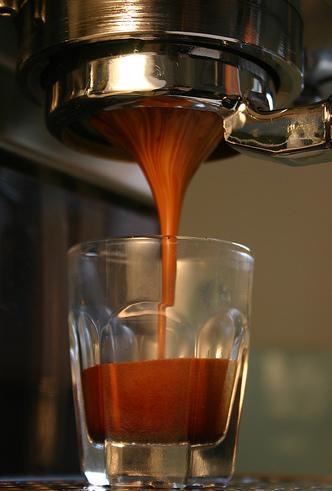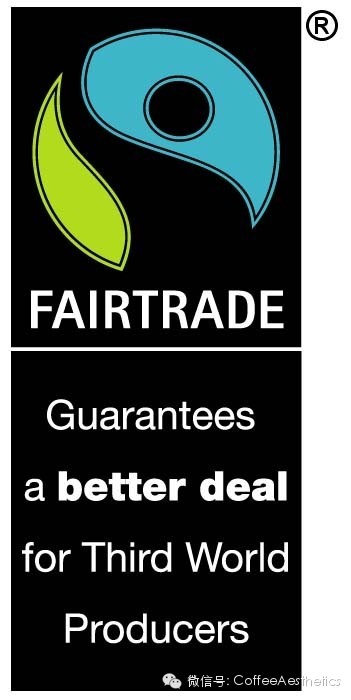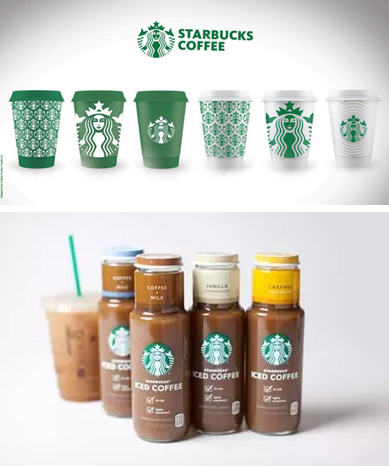Espresso status Survey Commercial concentrated formulations and the most average Household formulations
Author: Jame Hoffman, founder of Square Mile, a famous baker in London. Champion of the 2007 World Barista Competition. Author of Coffee Map of the World
Translation: Ms Chimp
The article was written on August 31, 2015.

This article is the result of a questionnaire I conducted in the past two weeks. I received about 1500 answers, and the response rate was very good. Although some of the data need to be removed, such as some weird answers, there is still a lot to study.
I hope these data will provide some insights into global and regional trends. I also wonder if there is any correlation between home users and business users in terms of taste and style.
Let me give you a warning: this is not a true summary of espresso around the world. This is the information provided by people who read my blog and make espresso at home or in a coffee shop. I think we need to consider this factor when we look at the results of the questionnaire.
One last hint: I'll use the extraction ratio (Brew ratio) to discuss the relationship between coffee powder and espresso, such as 1:2 or 1Rule 1.5. I won't use 50% or 60%, because it's a percentage, not a proportion. I know the difference between the two is obvious, but it seems that the mixture of the two is very common, and I think it makes no sense. )
WHO IS THE FUSSIEST?
Who is the most picky?
We can start by comparing the most average commercial concentrated formula with the most average household formula. In fact, they are very similar:
Household and commercial espresso extraction formulations
User
Amount of powder used
Extraction volume
Proportion
Extraction time (seconds)
Household use
18.3g
36.4g
1:2
24s-36s
business
19.0g
37.5g
1:1.98
25s-34s
You can see that the extraction formula and ratio of the two are very similar. The only difference is that the acceptable extraction time range is wider for household coffee. Interestingly, the style of espresso is relatively uniform, but home coffee has a higher standard deviation in coffee extraction formula (that is, a greater difference in the use of home-made coffee) and a smaller standard deviation in brewing time.
THE RISTRETTO IS DEAD
Ristretto is dead?
Not only is 1:2 widely used by respondents worldwide, but the percentage of ristretto-style espresso made by both cafes and households is very, very low.
When I count everything equal to or less than 1 Ristretto, the result may be more magnified (when the 1:1 ratio is not uncommon as a definition, my definition of Ristretto may seem very different. )
Only 11.8% of caf é respondents and about 14.5% of home baristas make more concentrated spaghetti / Ristretto. (maybe we can prove that the products offered by cafes are in fact a little out of touch with consumers' tastes? )
I guess I should better explain these data and take a look at the Brew Ratio data distribution of respondents in cafes:
So generally speaking, espresso has a relatively high proportion of extraction, so the coffee is somewhat diluted. When we don't know how they extract, if we presuppose that their extraction level is relatively reasonable (the higher the extraction ratio, the more likely it is), then the concentration of most espresso is about 9%. (for your reference, until recently, many of our baristas, including myself, have been pursuing a concentration of 12% and a cooking ratio of about 1 to 1.5.)
Some people may disagree that the Italian has always been like this (Italian coffee is usually close to 1:2 or more). The amount of powder we use now is a lot more than the 7g powder of traditional Italian espresso. In addition, the coffee we use is very different.
I think there are some different factors at work here:
Extraction: increasing use of extraction measurements (and people are looking for higher amounts of extraction)
There are more and more researches on bean grinder and extraction formula (such as EK43 bean grinder, etc.)
The network effect makes more people tend to be similar in production. I will return to this point in my conclusion.
A TRAVELLERS GUIDE TOESPRESSO IN DIFFERENT CITIES
An espresso travel guide for the world's cities
One of the interesting points in the questionnaire data is that different cities have different espresso styles. It is almost impossible to show all the data in the article. I chose 20 different cities (these cities have enough answers for us to do a little data analysis). I don't want to pile up information, so I focus on some different interpretations of some cities. Let's start with my hometown:
LONDON: 18.5g IN | 34.6g OUT | 26s-35s
London: 18.5 grams of powder / 34.6 grams of coffee liquid / 26-35 seconds
What interests me in London is that the difference in concentrated formula is the lowest. Basically, London has the most uniform espresso style of all the cities I've studied. Whether you interpret this as a strong unity of industry opinion or an embarrassing lack of variability, customers may be better able to answer this question than I do. Another surprise to me is that London ranks among the top five espresso cities in terms of extraction ratio. The other four cities that are thicker (with a lower extraction ratio) are San Francisco, Seoul, Moscow and Philadelphia.
NEW YORK CITY: 18.7g IN | 35.5g OUT | 24s-33s
New York: 18.7 grams of powder / 35.5 grams of coffee liquid / 24-33 seconds
New York and London are strikingly similar in many ways. The proportion of Ristretto produced by both is very low (about 4.5%), but the diversity in cooking formula is also very low. The coffee produced in New York is a little larger and the time is a little faster, but on average they are very similar.
SYDNEY: 20.6GIN | 47.2g OUT | 26s-35s
Sydney: 20.6 g powder / 47.2 g coffee liquid / 26-35 seconds
I particularly want to bring together the four major cities in Australia (Sydney, Melbourne, Perth and Brisbane). In terms of model, it is either too surprising that only these four cities use more than 20 grams of powder in the questionnaire. Imagine being a baker or supplier in Australia.)
The reason I only chose Sydney was that I was surprised by some discoveries. For a long time, the typical impression of Australian espresso is a large amount of powder, relatively strong coffee. Imagine a double Ristretto? (this is obviously not the case anymore. Perhaps this is the response of Sydney Coffee to everyone's stereotyped impression. now Sydney produces the largest and most diluted espresso of all cities. This larger extraction ratio (Sydney 1VR 2.3) echoes elsewhere: 1:2 in Perth, Melbourne and Brisbane 1VR 2.2.
There is a noteworthy finding: Australian families are not produced in the same way. The coffee is lower, about 19.5g, and then the coffee liquid is less. (the average ratio is 1: 1. 8). However, I don't think we should confuse household product preferences with the tastes of mass consumers.
MOSCOW:18.3G IN | 33.1g OUT | 22s-27s
Moscow: 18.3 g powder / 33.1 g coffee liquid / 22-27 seconds
Moscow is also interesting, not only the city with the lowest powder consumption except Montreal (Montreal is also unexpected), but Moscow is almost the fastest producer. Almost other cities have an extraction time of more than 30 seconds (Stockholm, Sweden is the closest, with a similar amount of coffee and an extraction time of about 23 to 31 seconds).
I am interested to know the cause of this phenomenon. Is there any substance in the water that assists the extraction? Or do people just prefer faster extraction? I have no idea, but this is interesting.
LOSANGELES: 19.1g IN | 37.0g OUT | 25s-32s
Los Angeles: 19.1 g powder / 37 g coffee liquid / 25-32 seconds
Los Angeles is worth mentioning because there is some diversity in this place. In addition to the average extraction ratio close to 1:2, the highest proportion of respondents produced Ristretto (30%). At the same time, the Los Angeles respondents had the greatest difference in the extraction formula. Los Angeles is the birthplace of some innovative espresso, which I think is a great thing, and it makes me want to study more about Los Angeles.
ARE CITIES REPRESENTATIVE OFCOUNTRIES?
Can the city represent the country?
That's hardly the case. Generally speaking, there is a certain gap in the production style between the country and its capital, although the gap is not so huge. Take Britain, for example:
Vs London, UK
Area
Powder quantity
Coffee liquid
Proportion
Extraction time (seconds)
The United Kingdom (except London)
18.0g
35.8g
1:2
26s-32s
London
18.5g
34.6g
1:1.87
26s-35s
Some people may now think that trends show that larger espresso will be more popular. You may also think that these trends will be more obvious in the big cities of the capital, but this is not the case. But you might think that the difference between the two is not worth mentioning. So this leads to my later conclusion.
A DEATH OF DIVERSITY
The death of diversity
In the end, what surprised me most of all the answers I got was that they were so similar. I don't even know how to look at the result. Maybe what we are seeing now is the wisdom of the group and we have reached the best level of operation. A ratio of 1:2 may be the best ratio for extracting espresso. But it still makes me restless, and the result is a little too good.
At the beginning of our coffee journey, one of the reasons why many of us fell in love with coffee was diversity. Coffee can taste so many different foods that it makes us feel that coffee has infinite potential and possibilities.
I have said before that there is real value in showing an aesthetic concept in our coffee. So what we are seeing now is an industry creating an industry aesthetic behind its espresso products, or are we just seeing a trend?
The Internet-such as my blog, Twitter, email messages, forums-allows messages to be delivered quickly. The disadvantage is that the spread of ideas is so easy that people accept them without testing and censorship.
As a start, I've been extracting at 1:2 for a while. The results of this questionnaire do not make this ratio really qualified and effective. In fact, it makes me deeply suspicious. Do I use this ratio as a condensed product because it is more convenient in arithmetic? I use this ratio because everyone else is using it? I'm sure I studied the extraction formula correctly and thought about it. Is this how I want to present coffee? I remember how much I used to like 1VR 1.55!
I firmly believe that we have reached a point in time where many of us need to rethink the way we deal with espresso. I think it's time to focus and think thoroughly about the feelings we're trying to share-from the point of view of taste buds, touch and brain. I don't believe that we all have the same sense of taste, the same idea and the same purpose for espresso. I don't believe it for a second, all customers are the same!
I firmly believe that a highly consistent environment is harmful to boutique coffee and to customers. Consciously and proudly running counter to the masses will allow you to see small and special markets. If nothing else, I hope reading this article will inspire you to jump out of your comfort zone and try. I hope this article will inspire you to discuss with your colleagues and really clearly define what kind of espresso you want to find, roast and share with your customers.
Important Notice :
前街咖啡 FrontStreet Coffee has moved to new addredd:
FrontStreet Coffee Address: 315,Donghua East Road,GuangZhou
Tel:020 38364473
- Prev

Fair Trade and Ecological Sustainable Coffee ─ from Libreville Field to Fair Trade
Coffee shops abound in the city, and office workers enjoy a good morning with a cup of coffee in fashionable coffee shops; if they are in a hurry, they may consider convenience stores; in less than five minutes, they can enjoy full-bodied coffee and start a refreshing work day. I do not know since when, Taiwanese life gradually can not be separated from coffee. What used to be common was convenience.
- Next

In-depth disclosure of Starbucks, coffee accompany you, diffuse coffee profit model, not rely on coffee to make money
When coffee is associated with taste and culture, it moves from the catering industry to the cultural and commercial fields. Investing in coffee shops is becoming the most popular area for investors nowadays. At present, coffee brands in the domestic market are mainly divided into European and American coffee, Korean coffee and Taiwan coffee. No matter what kind of coffee is invested, the start-up capital needs millions of yuan to start. However, the return on investment of millions of yuan does not come from
Related
- Why does hot American coffee taste bitter? Difference in proportional concentration between hot American and ice American
- Is espresso stored overnight in the refrigerator harmful to your body? Is frozen coffee better than freshly ground coffee?
- What parameters and proportions of water temperature should be used to grind and brew fresh coffee beans? Why can't I drink freshly roasted coffee right away?
- Customers have "changed" Manner's new products! Shop assistant: Please don't mess around!
- Remove sockets in customer areas at Starbucks stores?! Netizen: I won't go if I really tear it down
- What is the difference between the taste steps of sun-dried coffee and washed coffee? Why is sun-cured coffee sweeter and washed coffee sour?
- The recipe for salty grapefruit dirty is revealed! Coffee Festival salty grapefruit dirty coffee making materials parameters ratio milk share!
- How about the flavor of Sunlight 74158 at Sidamo Banshaha Mathieu Processing Factory in Ethiopia? 74158 Share the proportion of coffee brewing parameters!
- What effect does Italian American coffee with filter paper have? Will coffee taste better if it is put on filter paper at the bottom of the powder bowl?
- What is the color difference in coffee beans? What are the characteristics of honey processed coffee beans? Why are the anaerobically treated coffee beans uneven in color?

